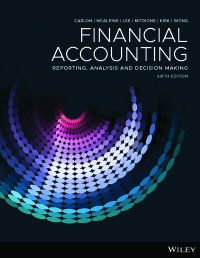Question
The below information is for the tax year 2019/20 (for the current year): Mr.Hilal is a UK Resident, working in a large UK company for
The below information is for the tax year 2019/20 (for the current year): Mr.Hilal is a UK Resident, working in a large UK company for a salary of 80,000. He received a bonus of 5,000 during the current year. He contributed 1% of his salary to a professional body for employment use and spent 500 on the purchasing office uniform. He received a company car (Diesel car) for business and personal use. The CO2 emission of the car is 119 gms per km. the cost of the car was 28,000 but the list price was 30,000. The company spent 3,000 on the accessories of the car. Mr.Hilal contributed 8,000 for the capital cost of the car and 1000 for the use of the car. The company spent all the running
costs of the car including fuel. The car has not met RDE2 standards. On 10 January 2016, Company provided him an accommodation, which Company purchased on 25 January 2004. The market value of the property on 10 January 2016 was 100,000. The details of the purchase price and the cost incurred by the company are listed below:
Jan 2004
Purchase Price of property
70,000
Dec 2005
Cost of Improvement
12,000
May 2016
Cost of Improvement
10,000
June 2016
Cost of Painting the building
5,000
Nov 2019
Cost of Improvement
40,000
The Annual Rateable Value of the property was 6,000 and Hilal repaid 1,500 to her employer for the use of the house for personal purposes. 0n 6 December 2019, Company also provided him home entertainment system costing 9,000 for his personal use.
The company granted him a loan of 60,000 on 6 April 2019 for the marriage of his family members. On 30 November 2019, Hilal has repaid 20,000 to the employer. Balance loans are outstanding on the tax year-end of 5 April 2020. He paid 300 interest to the company for
the borrowed loan. (Use the Average method). During the year Hilal spent 10 nights within the UK for employment purposes. Employer- paid 4 per night as daily Allowance. The company provided him 2 mobile phones both for business and personal use. The cost of the 1st mobile phone was 400 and the 2nd one was 500. The company also provided him the use of Van with fuel for personal purposes during the year 2019/20.
4
Other than the salary he had investment income from various sources. He was owning 3 houses in the UK and received a Rental income of 40,000. He invested in Debentures of UK company and received an Interest income of 32,000. He was a partner in a partnership firm had a 60% share in the partnership profit. The profit of the partnership firm for the year ended 31/12/2019 was 20,000.
As of now, he has not become a member of any pension scheme such as Personal Pension Scheme and Occupational Pension scheme. He is not having any habit of donating money directly to the charity or through a Payroll deduction scheme.
a) You are required to calculate the tax liability and tax payable of Mr.Hilal for the tax year 2019/20. Also, calculate NIC class 1 and 1A. (6 marks)
Task 1: part 2:
For 2020/21 (for next year), the employer of Mr.Hilal allowed him to opt for Mileage allowance instead of the car benefit. Under mileage allowance, he must use his car for business travel and the company agreed to pay 0.50 per mile. Based on the estimation, he must travel 20,000 miles for business purposes in the next year 2020/21. Also, the company agreed to give the House Rent Allowance of 6,000 instead of Accommodation benefit.
b) As a tax adviser, for 2020/21, advise Mr.Hilal whether to accept mileage allowance and/or House Rent Allowance instead of Car Benefit and Accommodation Benefit or let him continue as it is like 2019/20. Your advice is based on the tax saving by accepting the above options. Assume that tax rate and allowances of 2019/20 will be applicable for 2020/21
(For answering this question, it is not necessary to calculate various incomes from the beginning, you can go for incremental approach). (2 Marks)
Task 1: Part 3:
Mr.Hilal felt that the tax liability was too high in 2019/20. He wants to reduce the tax in 2020/21 onwards. He heard something about contribution to Personal Pension Scheme and/or Occupation pension scheme may be directly or through payroll deduction scheme and donating to charity may be directly or through his employer.
c) What are the tax consequences (tax savings), if he contributes 8,000 donation and 4,800 to the personal Pension scheme? He is not intending to contribute himself any amount to the Occupational pension scheme, but his employer will contribute 9,000 to the same scheme.
5
To answer this question, take Question (a) as a base, assuming the tax rate and allowances of 2019/20 will be applicable for 2020/21. Give clear explanation if given information is not affecting the tax. (2 marks)
Step by Step Solution
There are 3 Steps involved in it
Step: 1

Get Instant Access to Expert-Tailored Solutions
See step-by-step solutions with expert insights and AI powered tools for academic success
Step: 2

Step: 3

Ace Your Homework with AI
Get the answers you need in no time with our AI-driven, step-by-step assistance
Get Started


